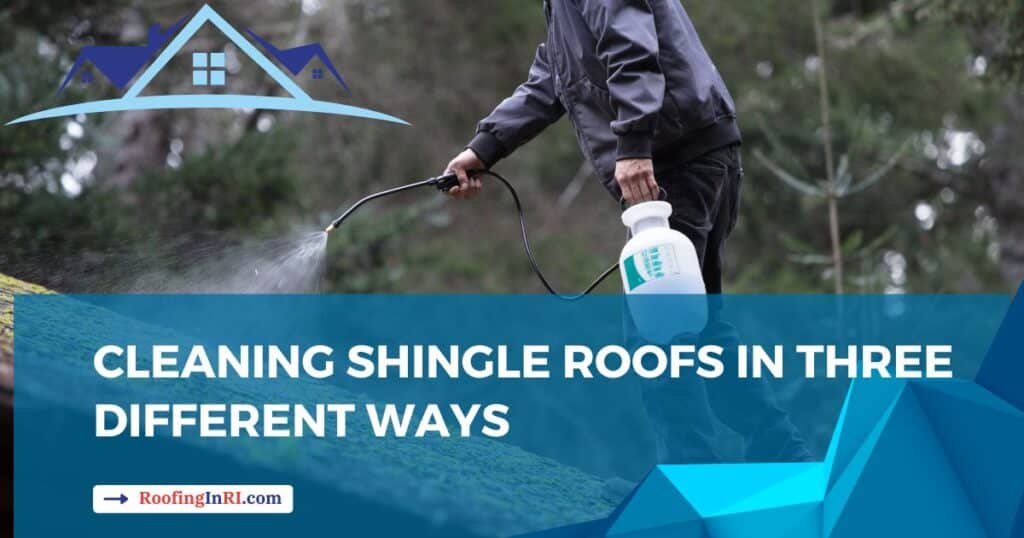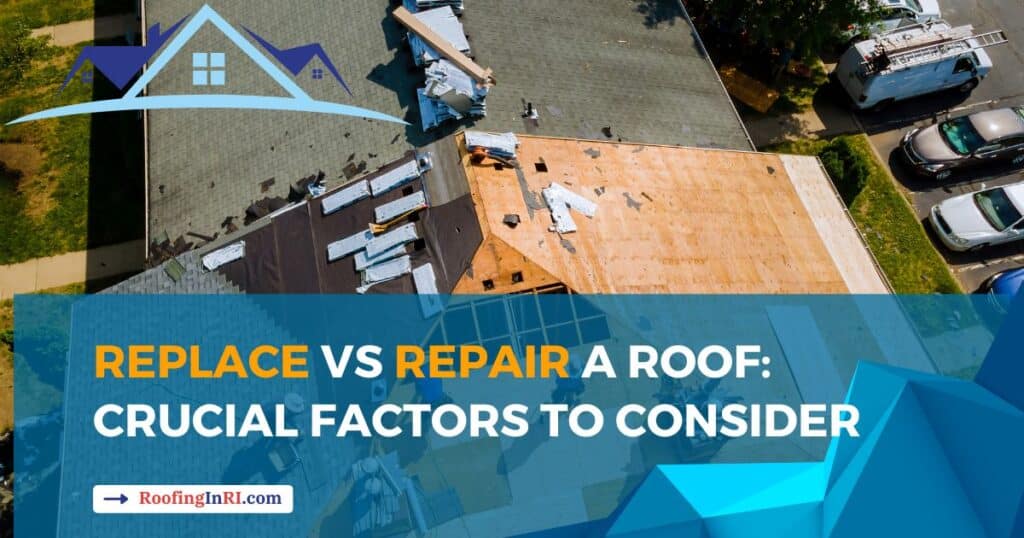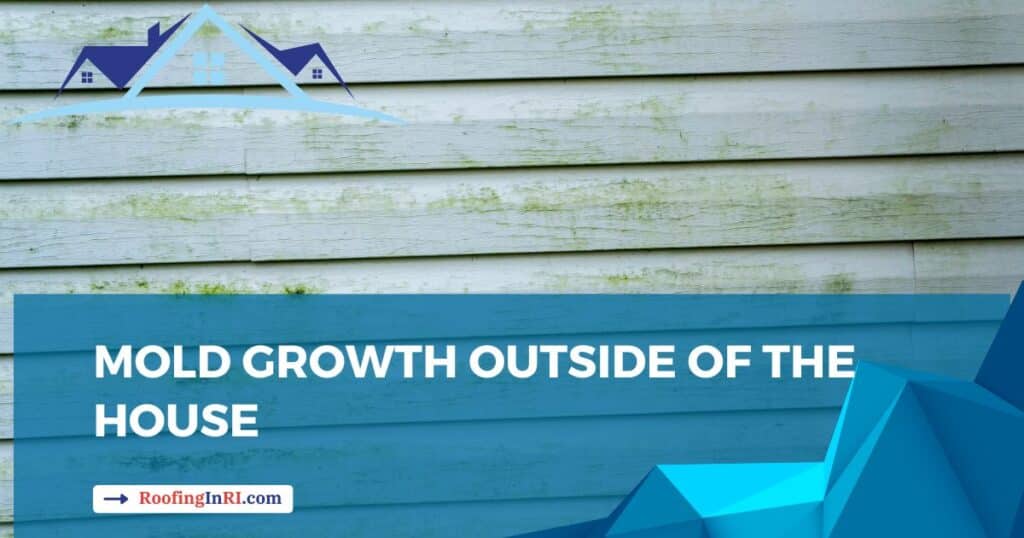Maintaining the cleanliness of your roof shingles is crucial not only for aesthetic reasons but also for the overall health and longevity of your roof. Over time, roofs can accumulate dirt, algae, moss, and other debris, compromising their structural integrity.
This article will explore three methods for cleaning roof shingles: using bleach and water, specialized roof cleaning products, and a pressure washer for asphalt shingles.
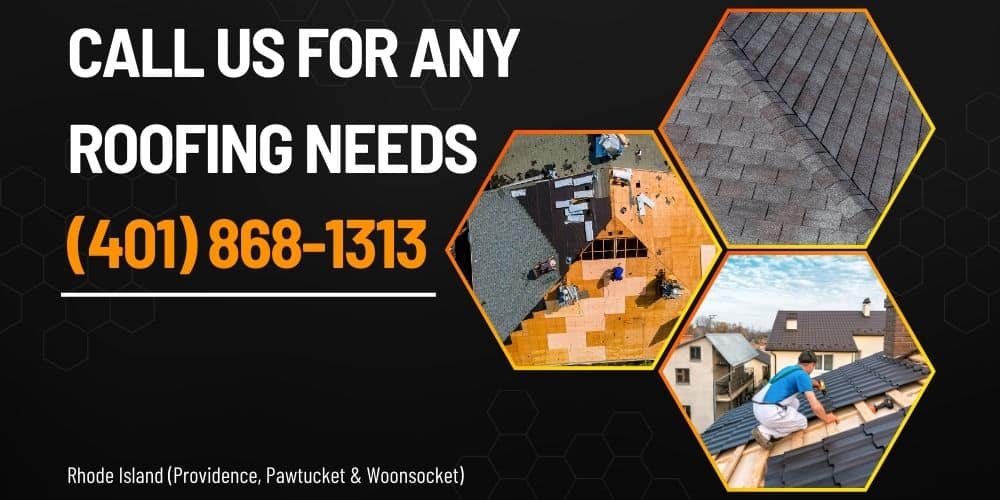
Let’s get started.
Method 1: Clean your roof shingles using bleach
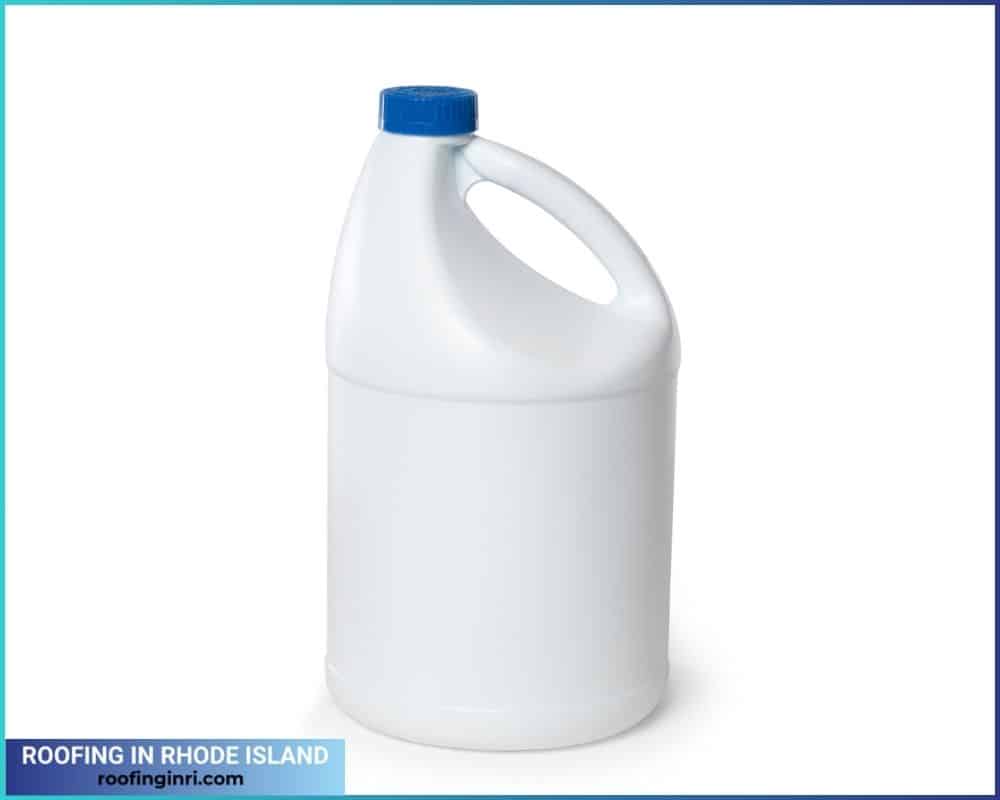
Cleaning roof shingles with bleach is a common and effective method for removing algae, moss, and mildew. Here’s a step-by-step guide on how to clean roof shingles using bleach:
Materials Needed:
- Chlorine bleach
- Water
- Safety glasses
- Gloves
- A garden sprayer or a soft-bristle brush
- Garden hose
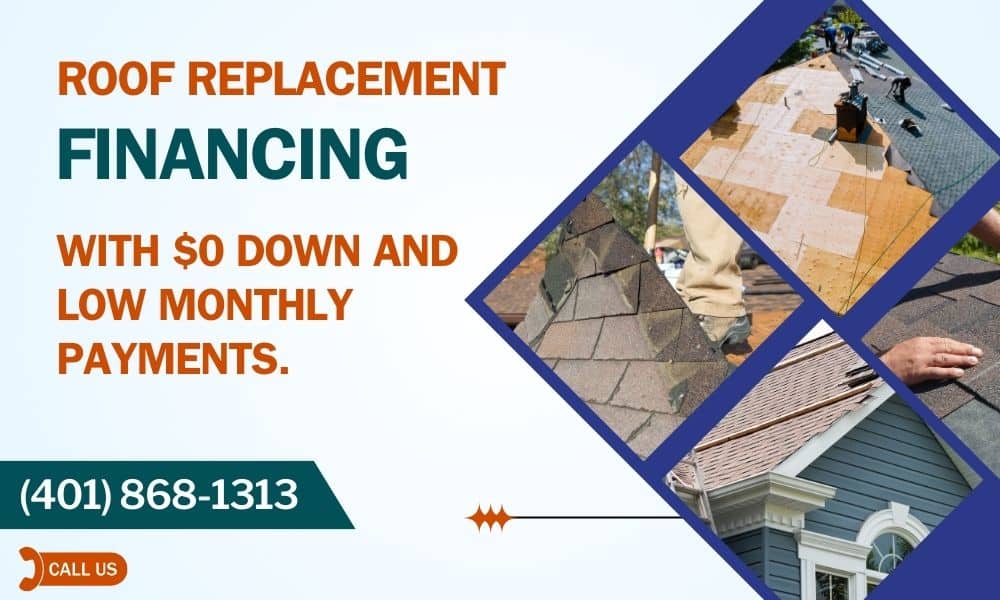
Steps:
- Safety Precautions: Before cleaning, ensure your safety by wearing safety glasses and gloves. When using bleach, it is important to take precautions as it can harm the skin and eyes.
- Mix the Solution: Mix one gallon of water with one cup of chlorine bleach in a large bucket. This mixture is a potent cleaning solution capable of eradicating algae, moss, and mildew.
- Prep the Area: Wet the surrounding vegetation around your house with water before applying the bleach solution. This helps protect plants from potential bleach exposure.
- Apply the Bleach Solution: Use a garden sprayer to evenly apply the bleach and water mixture onto the roof shingles. If you prefer, you can also apply the solution to the shingles using a soft-bristle brush. Ensure that the entire surface is covered.
- Allow Dwell Time: Let the bleach solution sit on the roof shingles for at least 15 minutes. This dwell time allows the bleach to break down and loosen the dirt, algae, and moss.
- Scrub if Necessary: You can gently scrub the shingles with a soft-bristle brush if there are stubborn stains or heavily soiled areas. Be cautious not to damage the shingles during this process.
- Rinse Thoroughly: After the dwell time, thoroughly rinse the roof with a garden hose. Removing all traces of bleach is crucial to prevent any potential damage to the shingles. Ensure to rinse any nearby vegetation that might have been exposed to the bleach solution.
- Inspect and Repeat if Necessary: After rinsing, inspect the roof to ensure that all stains and debris have been removed. If needed, you can repeat the process for particularly stubborn areas.
- Dispose of Runoff Properly: Be mindful of where the runoff from the roof cleaning goes. Avoid pouring the bleach solution into storm drains or bodies of water, as it can cause harm to aquatic life.
- Post-Cleaning Care: Consider applying a zinc or copper sulfate solution to the roof after cleaning. These substances can help prevent the return of algae and moss over time.
Remember, cleaning your roof with bleach should be done carefully and by safety guidelines. If you have concerns or if your roof is made of materials sensitive to bleach, consult with a professional.
Related: How to remove mold from roof shingles?
Method 2: Using roof cleaning products
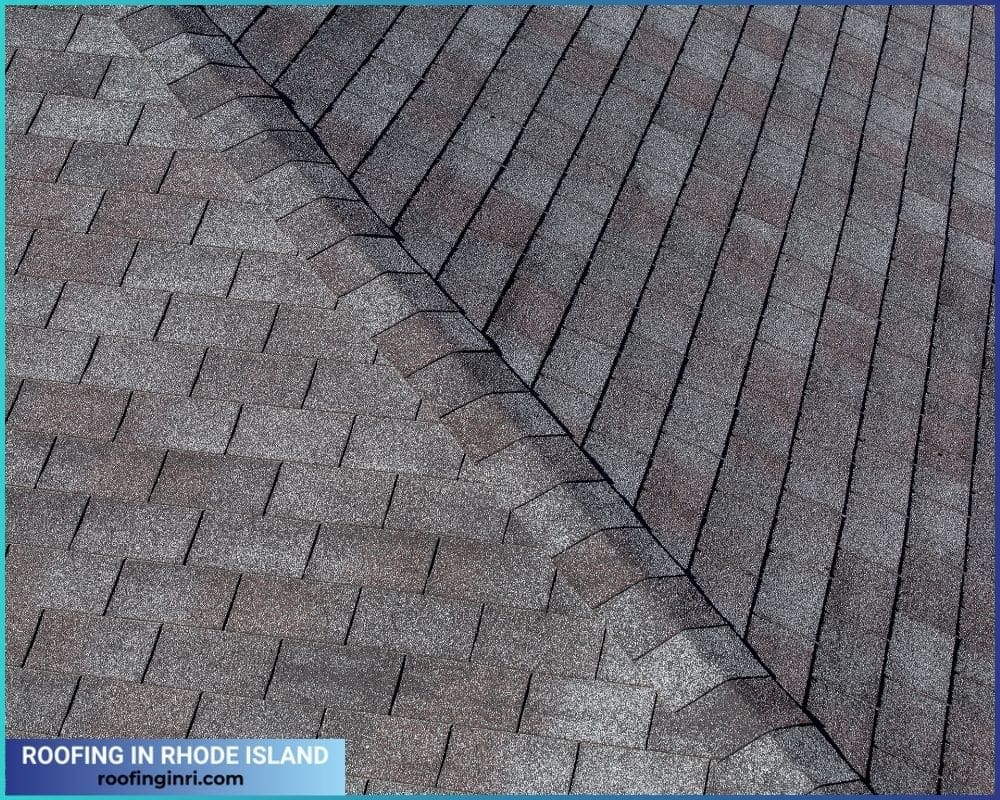
Specialized roof cleaning products offer a gentler and environmentally friendly alternative to bleach. They are specifically formulated to address roof challenges without causing damage. These solutions often provide targeted stain removal, longer-lasting effects, and a user-friendly application, and they align with manufacturer recommendations. Moreover, they are less harsh on surrounding landscaping, making them a preferred choice for effective and safe asphalt shingle roof cleaning.
These roof-cleaning products generally contain environment-friendly elements like hydrogen peroxide, sodium percarbonate, or citric acid. Additionally, specialized roof cleaning solutions might include inhibitors or protective coatings to prevent future algae or moss growth. Choose formulations that align with your roofing material’s recommendations and environmental considerations.

Manufacturers generally make these cleaning products for different types of roofing materials. So, if you don’t find anything made explicitly for shingles, don’t worry. You can still use them.
Read also: The reasons why you should not install metal roofs over shingles
Method 3: Using a pressure washer
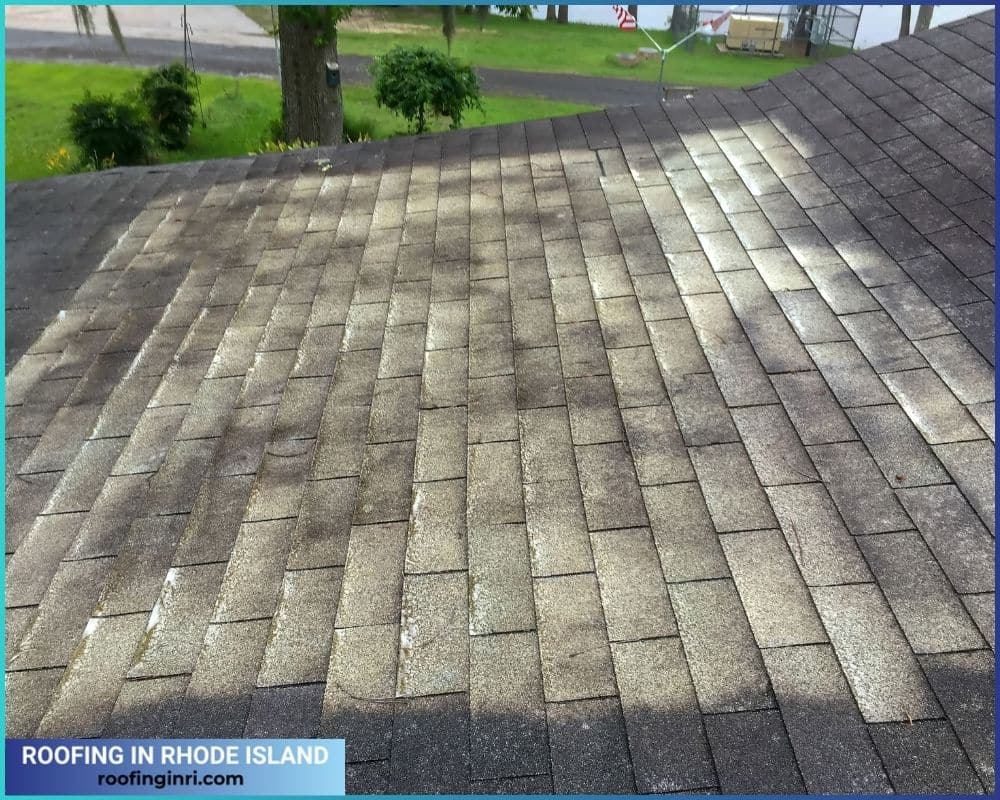
It requires precision to avoid damaging shingles. Begin by prioritizing safety with safety glasses, gloves, and, if necessary, a safety harness on steep roofs.
Opt for a pressure washer with a PSI between 1,200 and 1,500, adjusting the nozzle to a wide-angle spray pattern. Before starting, pre-wet the roof to loosen debris.
Optionally, apply a roof cleaning solution, allowing it to dwell as instructed. Maintain a 6-8 inch distance from the shingles, moving consistently from top to bottom. Thoroughly rinse the roof afterward, inspecting for any missed spots. Dispose of runoff responsibly.

Consider applying a roof conditioner for added protection. Always adhere to safety guidelines and manufacturer recommendations to ensure optimal results without compromising the roof’s integrity. Professional advice is recommended if uncertain, especially for roofs with sensitive materials.
Read also: What are architectural asphalt shingles?
Frequently asked question
Cleaning a roof with bleach can be effective but requires caution. It can be harsh on roofing materials and the environment. Bleach runoff can harm plants. Additionally, it may not be suitable for all roofing materials. Consult the manufacturer’s guidelines before using bleach. Alternatives, such as specialized roof cleaning products, are often gentler, environmentally friendly, and specifically formulated for roofing materials. Always prioritize safety and choose cleaning methods that align with the specific requirements of your roof.
The best solution to clean a roof depends on factors such as the type of roofing material, the specific contaminants present, and environmental considerations. A dedicated roof cleaning product formulated for asphalt roofs is often a safe and practical choice for asphalt shingles. These products are designed to remove stains, algae, and moss without causing damage. If you don’t find a suitable product in your location, a mixture of bleach and water can be effective. However, it requires careful application and thorough rinsing to prevent damage to the shingles and surrounding vegetation. When done with caution and at the correct pressure, pressure washing is another option. Ultimately, the best solution aligns with your roof’s needs, considering its material and the type of contaminants present. Always follow safety guidelines and product recommendations.
They generally use a combination of specialized cleaning solutions and equipment tailored to the roof’s specific needs. Roof cleaning products for different roofing materials, such as asphalt shingles or tiles, are commonly employed. These solutions often include detergents, surfactants, and environmentally friendly agents to effectively remove stains, algae, and moss without causing damage. Professionals may also use pressure washers with adjustable PSI settings to safely clean roofs, ensuring the correct pressure for each type of roofing material. Additionally, some professionals may utilize soft-bristle brushes for targeted cleaning. It also depends on the roof’s condition, material, and the type of contaminants present. Professional roof cleaners prioritize safety, adherence to manufacturer guidelines, and environmentally friendly practices in their cleaning processes.
Yes, bleach can effectively remove moss from the roof. The sodium hypochlorite in bleach is a powerful disinfectant and cleaner, breaking down and killing moss on contact. To use bleach for moss removal, mix it with water (typically one part bleach to one part water) and apply the solution to the affected roof areas. Allow it to sit for about 15 minutes, allowing the bleach to penetrate and loosen the moss. Finally, rinse the roof thoroughly with water.
While bleach can be effective, it’s crucial to exercise caution. High concentrations or prolonged exposure can damage roofing materials and damage surrounding vegetation. Always follow safety guidelines, dilute bleach appropriately, and consider alternatives like specialized roof cleaning products for a more targeted and roof-friendly approach.
Conclusion
Maintaining clean roof shingles is vital for both aesthetics and the long-term health of your roof. This article explored three methods: bleach and water, specialized roof cleaning products, and a pressure washer.
The bleach method, while effective, requires caution to prevent damage and must adhere to safety guidelines. Specialized roof cleaning products offer an eco-friendly alternative, providing targeted stain removal and aligning with manufacturer recommendations. When done meticulously, pressure washing is another option, requiring proper safety measures and post-cleaning care.
Choosing the best cleaning solution depends on factors like roofing material and contaminants. Always prioritize safety and consider professional advice for sensitive roofs. Whether using bleach, specialized products, or pressure washing, a clean roof enhances aesthetics and prolongs its lifespan, contributing to a well-maintained home.
Ready to elevate your home’s protection and curb appeal? Call us at (401) 868-1313 today for expert roofing solutions in Rhode Island (Providence, Pawtucket & Woonsocket) – because your roof deserves the best care it can get!


